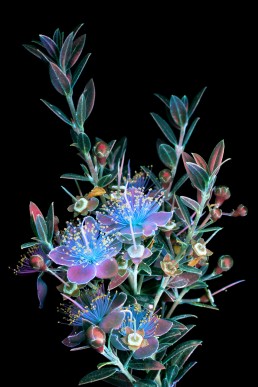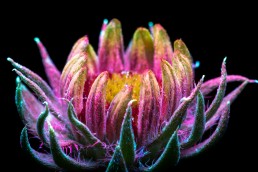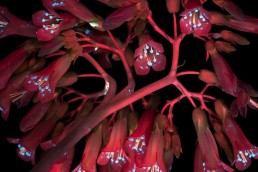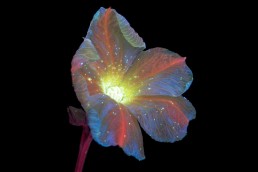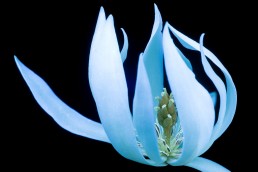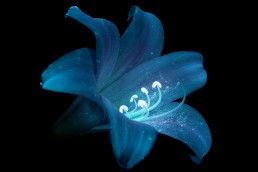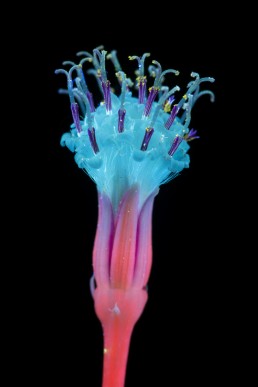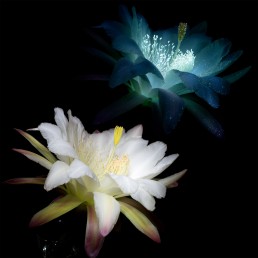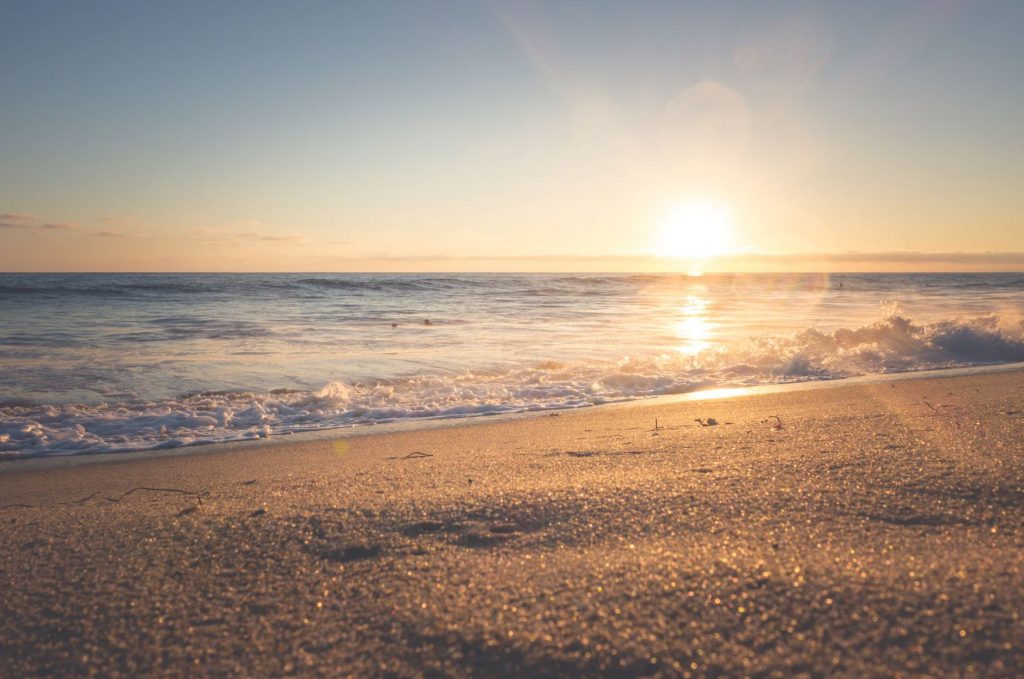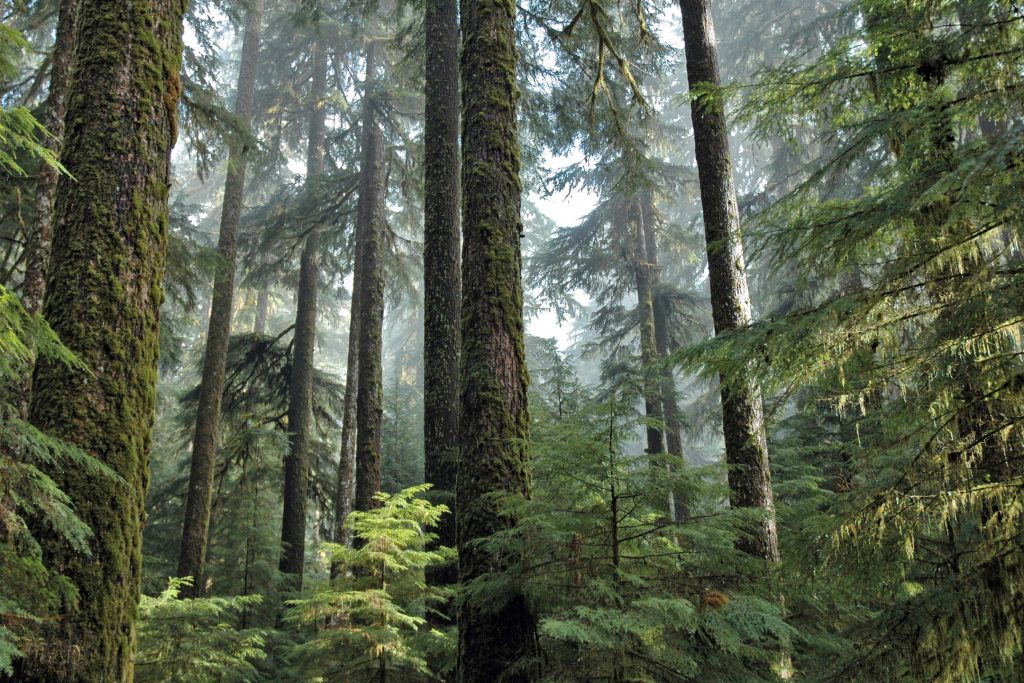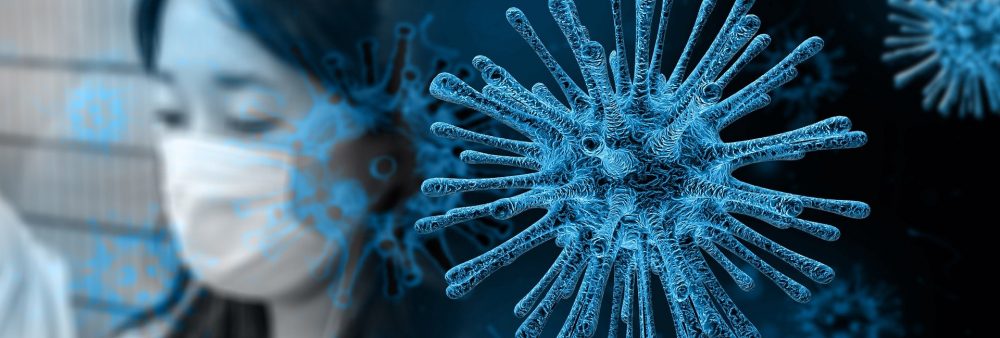Koelreuteria
Gallery 2 | Flower Flourescence
I started doing Ultraviolet-Induced Visible Fluorescence (UVIVF) photography in early 2014 after seeing the work of another photographer named Alex Holovachov. I was immediately drawn to it, wanting to try it myself and started using informational resources provided by Alex. Over the time since then, I have continuously refined my process to get the most out of each subject.
UVIVF photography uses ultraviolet light sources to excite the material of plants or other subjects, resulting in them actually glowing in a variety of colors. The process is just like how a white T-shirt will glow blue under a blacklight, but as most things are not naturally prone to strong fluorescence, the strength and wavelength of the light source are quite important to make it work well. Using a shorter wavelength allows the camera to ignore the reflected light from the light source, while some of the energy striking the subject is transformed to longer wavelengths which manifest in the visible spectrum, ranging all the way from blues to potentially the near-infrared range.
While many things fluoresce, flowers are one of the most alluring as they’re naturally appreciated for their beauty but have a hidden splendor that is always visible yet never seen. The process of UVIVF photography reveals natural fluorescence which occurs any time the subject is exposed to sunlight, but which is usually too overwhelmed with visible light to be distinguished. Working with a strictly ultraviolet light source, all of that obscurity is stripped away, leaving surreal and beautiful luminous hues behind.
Working with flowers, in particular, has affected my proclivities and worldview in several ways, starting with raising plants specifically with the intent to photograph them. Likewise, in pursuit of finding new subjects, I rarely have to stray more than a mile from home, revealing the incredible botanic diversity that can be found in moderate climates where people live and the global interconnectedness we overlook quite constantly.
Common Myrtle
Blanketflower/Dragon’s Nest
Experiencing this diversity and researching the subjects starts to create perceptions in the mind’s eye of unique global climates without ever having experienced them in person—the plants themselves becoming a gateway to experiencing the world. A different tangent arising from this photography is an appreciation for the struggles and real achievement that agriculture is since without growing one’s own decorative plants, much less food plants, it is nearly impossible to comprehend what it takes to cultivate land to feed millions or billions of humans.
Mother of Millions
Just as it has increased my interest in nature, botany, agriculture, and the environment, this photography is an engaging tool to inspire similar interests in others who see the images. Ultimately, I feel the purpose of art is to improve the life experience of those who encounter it, and while for some it is strictly for the prettiness or interest of it, I think the potential inspiration and enlightenment of this sort is equally of merit.
More by Craig Burrows



